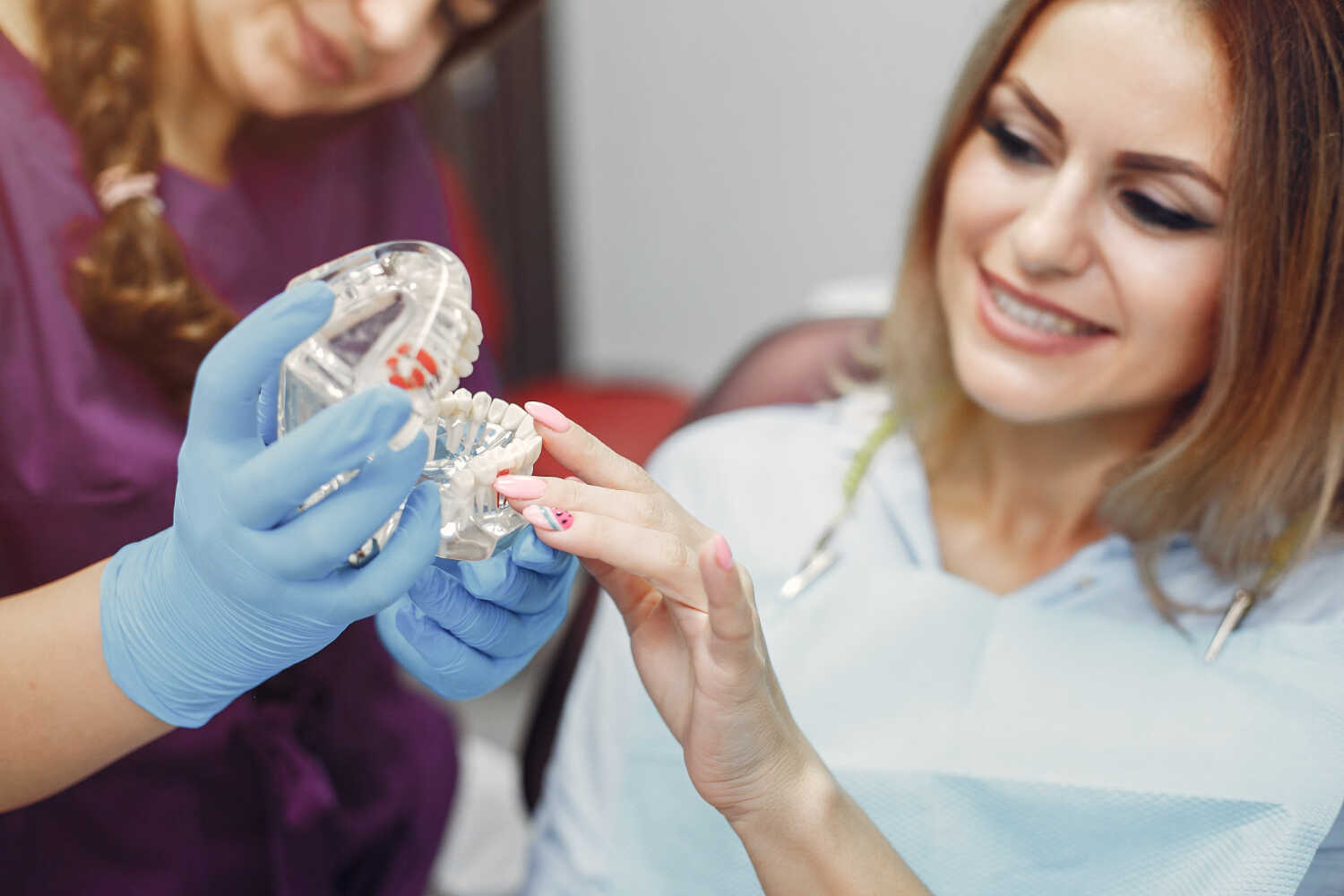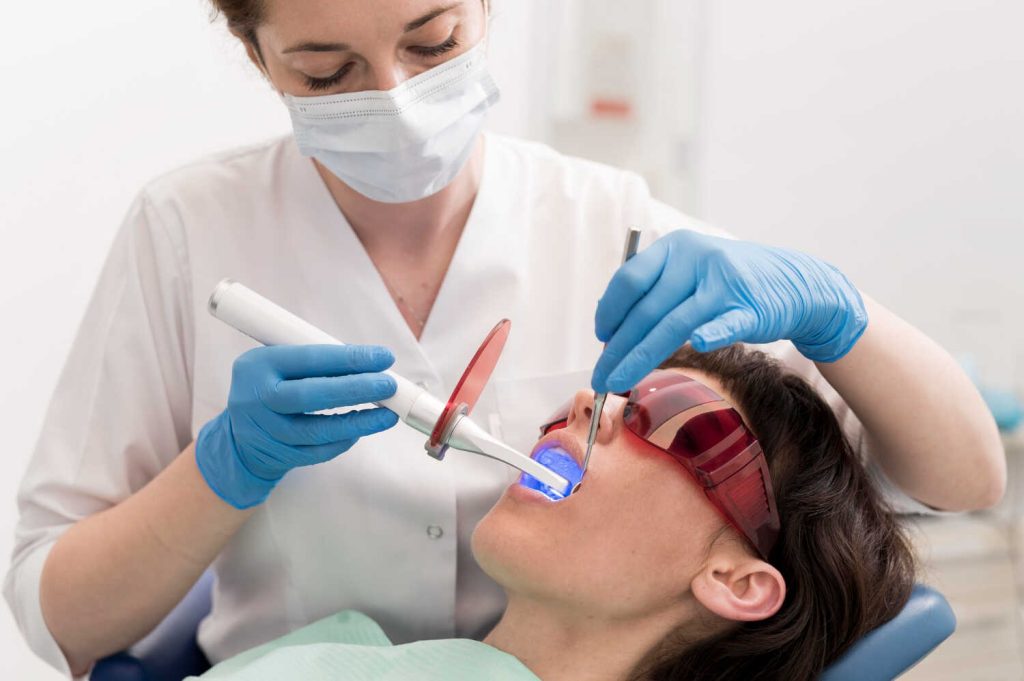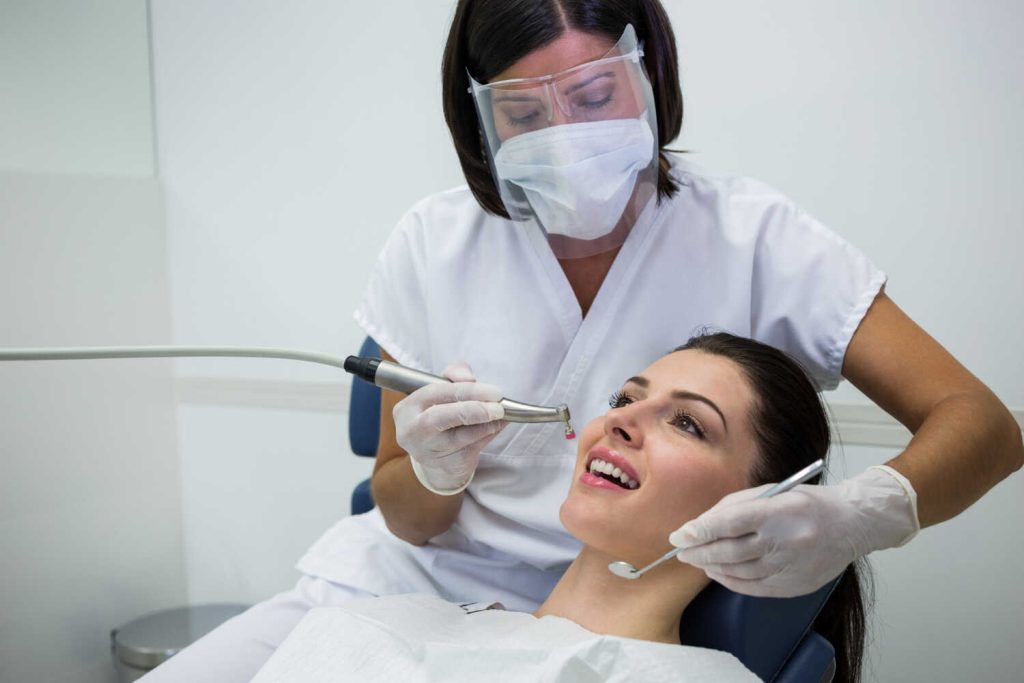Introduction
Over time, your teeth can become stained and discolored from food and drinks like coffee, tea, red wine, and berries. Smoking cigarettes and chewing tobacco also cause recurrent yellowing and tooth discoloration. While teeth naturally yellow as you age, you can reverse these effects and brighten your smile again with teeth whitening. Custom-fitted whitening trays are a popular option prescribed by dentists for at-home whitening. This article explains what whitening trays are, how they work to whiten teeth, types of trays, and alternative methods of teeth whitening that don’t require trays.
What are Teeth Whitening Trays?
Teeth whitening trays, also called bleaching trays or mouth trays, are custom-made plastic molds worn over the teeth to hold the whitening gel against the tooth surface during at-home bleaching treatments. The trays are thin, flexible, transparent, and custom-fitted to your teeth.
Whitening trays allow optimal contact between the whitening gel and your teeth for better penetration of the bleaching ingredients into the tiny pores of the enamel. This enables powerful stain removal from the inside out. Dentists take upper and lower dental impressions to create a customized whitening tray for your unique teeth size, shape, and alignment.
How Do Teeth Whitening Trays Work?
Whitening trays have inner walls molded to fit your teeth’ contours perfectly. Your dentist will provide whitening gel to squeeze into the trays and instructions on wear time. Typical at-home whitening involves:
- Brushing and flossing before use to remove plaque
- Apply the whitening gel into the tray mold, ensuring an even coating over the inner tray surface and teeth.
- Insert the trays with gel over the upper and lower teeth. The gel remains in contact with teeth during wear.
- Wear the trays for the prescribed time per day or overnight as you sleep. Extended exposure allows the active whitening ingredients to penetrate enamel and lift stains thoroughly.
- Remove the trays after a recommended duration and rinse the remaining gel.
- Cleaning trays after each use and storing correctly.
Whitening gels like carbamide peroxide break down into hydrogen peroxide and urea. Hydrogen peroxide oxidizes and diffuses deep into the enamel to bleach away intrinsic stains and yellowing inside the teeth structure. With consistent regular use, your teeth gradually whiten from the inside out to your natural brighter color.
Types of Whitening Trays
There are a few standard options for whitening tray types:
- Stock Trays – These are pre-formed in generic small, medium, and large sizes. They are “one-size-fits-all” and provide the most basic fit over teeth.
- Custom Trays – Uniquely molded from dental impressions of your teeth for a personal fit. Most are prescribed for optimal results and comfort. CaIt can be full-arch or sectional trays.
- Reservoir Trays – Custom trays with additional raised reservoirs built into the mold to hold extra gel against the front teeth. Useful for more concentrated bleaching of stubborn stains.
- Sports Guards – Special double-layer trays to offer protection against teeth trauma during sports along with whitening.
- Night Guards – Custom trays provide a comfortable, tight fit for extended overnight wear while sleeping. Allows for 8+ hours of continuous bleaching.
The dentist will recommend the ideal tray type based on teeth condition, desired whitening level, wear time, and lifestyle factors. Custom trays ensure the most comfortable, leak-proof fit with the most excellent precision of results.
Benefits of Whitening Trays
Using customized bleaching trays offers essential advantages:
- Enables powerful at-home whitening under doctor supervision for dramatically whiter teeth than over-the-counter methods. It can lighten up to 8 shades whiter.
- Achieves harder to remove intrinsic stains within the inner tooth structure, not just surface extrinsic stains—better whitening of greyish, tetracycline-stained, or fluorosis teeth.
- Allows for prolonged contact with whitening gel against the enamel for better penetration and stain-litigation than strips or paint-on gels.
- Customized trays provide the most comfortable and retentive fit to prevent gel leakage and maximize bleaching of all tooth surfaces.
- Offers the convenience of at-home whitening at your own pace alongside regular dental visits. It is more affordable than in-office power whitening.
- Provides touch-up maintenance whitening safely for years after the initial intensive treatment course. It keeps your smile visibly whiter and brighter.
Potential Drawbacks of Whitening Trays
While highly effective at teeth whitening, using trays does have some possible disadvantages, including:
- – Requires dental impressions and 1-2 week wait for fabrication of trays. In-office power whitening achieves quicker results in one visit.
- – Must carefully follow usage instructions to prevent over-whitening complications.
- – Whitening gels may cause some patients temporary tooth sensitivity or irritated gums, i
– Trays require diligent cleaning to prevent mold or bacteria buildup.
after each use
– It is less convenient for on-the-go touch-up whitening than strips or paint pens. - – Results take longer than in-office whitening, but they are better than over-the-counter products applied without trays.
- – Not recommended for children under 16 as pulp chambers are large and sensitivity risk is higher.
With proper use under dentist supervision, the maximum results achieved safely outweigh any disadvantages for most patients wanting dramatically whiter teeth.
Alternatives to Whitening Trays
While trays are the gold standard, other options don’t require custom trays for teeth whitening:
In-Office Power Whitening – Whitening gels containing up to 40% hydrogen peroxide or 35% carbamide peroxide are applied directly to teeth and are accelerated with light or heat activation. Achieves complete whitening in about 1 hour with no trays needed.
- Whitening Strips – Thin adhesive strips coated with lower concentration peroxide gel that stick to front teeth. More gradual whitening over two weeks of treatment time.
- Whitening Rinses – DaUseiquid peroxide formulas to daily swish around teeth—mild lightening over longer-term use.
- Whitening Toothpaste – Contains abrasives and low peroxide levels to polish away surface stains with regular brushing and minimal whitening power.
- Whitening Pens – Small brush applicators to paint peroxide bleach onto teeth. Typically, it only whitens front teeth with limited effectiveness.
Conclusion
For those seeking maximum teeth whitening with dramatic stain removal and lightening, custom take-home whitening trays prescribed by your dentist are the most effective treatment. While alternatives like strips or rinses offer more convenience, they cannot achieve the same level of whitening from extended contact and penetration of concentrated peroxide gels against your teeth surfaces overnight or for hours. Consult at Mylifesmiles Dental Clinic to discuss your options and get custom trays fitted for your teeth to reveal your brightest smile.





